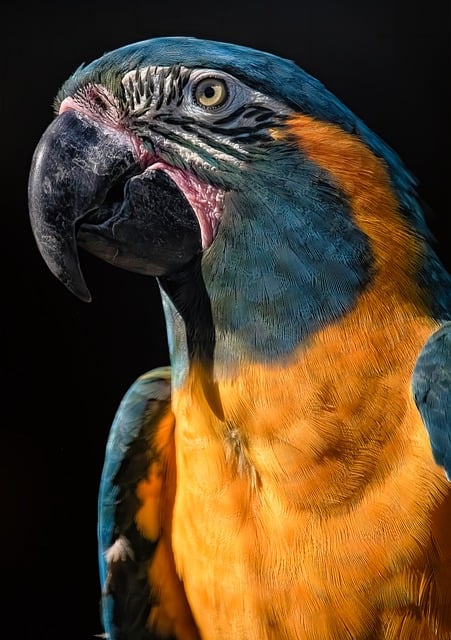
The Blue-Throated Macaw (Ara glaucogularis), also known as the Caninde Macaw or Wagler’s Macaw, is a strikingly beautiful bird that has captured the hearts of avian enthusiasts and conservationists alike. The Blue-Throated Macaw is classified in the avian order Psittaciformes and family Psittacidae. The lifespan is up to 50 years.
Native to the tropical savannas of Bolivia, this large parrot is not only known for its vivid colors and spirited personality but also for its precarious status as one of the most endangered macaws in the world. In this article, we will explore the unique characteristics, habitat, behavior, and conservation efforts surrounding this remarkable species.
| Genus | Ara |
| Species | A. glaucogularis |
| Binomial Name | Ara glaucogularis |
| Length | 80-90 cm(2’7″-2’11”) |
| Wingspan | about 90 centimeters(3′) |
| Weight | 600 g to 1.1 kg(1.3-2.4 lbs.) |
| IUCN Status | Critically endangered |
Physical Characteristics
The Blue-Throated Macaw is approximately 85 centimeters (2’9″) in length, weighs 850 grams(1.9 pounds) on average, and the wingspan is about 90 centimeters(3′). Its most distinctive feature is its vibrant blue throat. The Blue-Throated Macaw’s powerful beak is perfectly adapted for cracking nuts and seeds,
Habitat And Range
This species is primarily found in the northeastern region of Bolivia, particularly in the Beni department. Blue-Throated Macaws inhabit forests and the savannas, where they can access both trees for nesting and open areas for foraging. These habitats provide essential resources for their diet which consists of fruit, seeds, and nuts. Unfortunately, due to habitat loss and degradation caused by agricultural expansion, the Blue-Throated Macaw’s natural environment is increasingly under threat.
Social Structure And Breeding
Blue-Throated Macaws exhibit monogamous bonds. They nest in tree cavities and nest boxes. The clutch size is 2-6 eggs and the incubation period is 26-28 days.
Conservation Status
Tragically, the Blue-Throated Macaw is classified as Critically Endangered by the International Union For Conservation Of Nature (IUCN). The primary factors contributing to its decline are habitat destruction due to agricultural practices and illegal trapping for the pet trade.
Conservation efforts are ongoing to protect this magnificent bird and its habitat. Organizations worldwide are working tirelessly to raise awareness and promote sustainable practices that can help safeguard the Blue-Throated Macaw. Initiatives include habitat restoration, anti-poaching campaigns, and community education programs to prevent illegal trapping. Furthermore, captive breeding programs have been established to help bolster the population and increase genetic diversity.
A Bright Future?
The plight of the Blue-Throated Macaw serves as a reminder of the delicate balance that exists within ecosystems and the intertwined fates of wildlife and humanity. While its situation remains precarious, there is hope. Through concerted conservation efforts, community engagement, and international support, we may still have the chance to witness the delightful Blue-Throated Macaw soaring across the skies of Bolivia.
In conclusion, the Blue-Throated Macaw is not just a stunning example of nature’s artistry; it is a symbol of the urgent need to protect our planet’s biodiversity. As we work together to ensure the survival of this unique species, we also contribute to the health of our global ecosystem, making every effort to cherish and preserve our world’s natural beauty.
